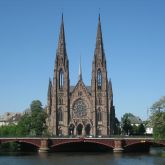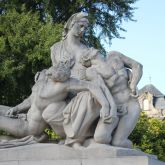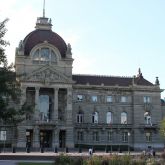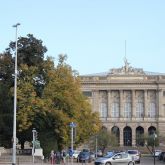Description
After the annexation of the city by the German Empire in 1871, Strasbourg became a huge construction site. Not only was there the necessary rebuilding due to the destruction of the war, but also, there was a desire to transform the city into a showcase of the empire. Indeed, following the annexation of Alsace and Moselle to the second German Reich, Strasbourg became the capital of a new region commonly called Alsace-Lorraine. This new function was not compatible with the urban fabric of the city at the time, it was still surrounded by its medieval ramparts, it had dark and narrow streets and many old buildings, it simply was not equipped to be a regional capital.
A new city (in German “Neustadt”) of more than 380 hectares would therefore be designed and built, thus tripling the urban surface, and making Strasbourg pass from the status of a medieval city contained within its fortifications to that of a modern city. Running water, gas and widespread electricity would make Strasbourg a regional capital at the forefront of modernity. At the same time, city planners would highlight the power and wealth of the German empire with buildings such as the imperial palace, the grand post office and the university palace.
Did you know...?
The Neustadt was inscribed in 2017 on the World Heritage List.
The initial property, inscribed in 1988 on the World Heritage List, was formed by the Grande-Île, the historic centre of Strasbourg, structured around the cathedral. The extension concerns the Neustadt, new town, designed and built under the German administration (1871-1918). The Neustadt draws the inspiration for its urban layout partially from the Haussmannian model, while adopting an architectural idiom of Germanic inspiration. This dual influence has enabled the creation of an urban space that is specific to Strasbourg, where the perspectives created around the cathedral open to a unified landscape around the rivers and canals.
More information: https://whc.unesco.org/en/list/495/



